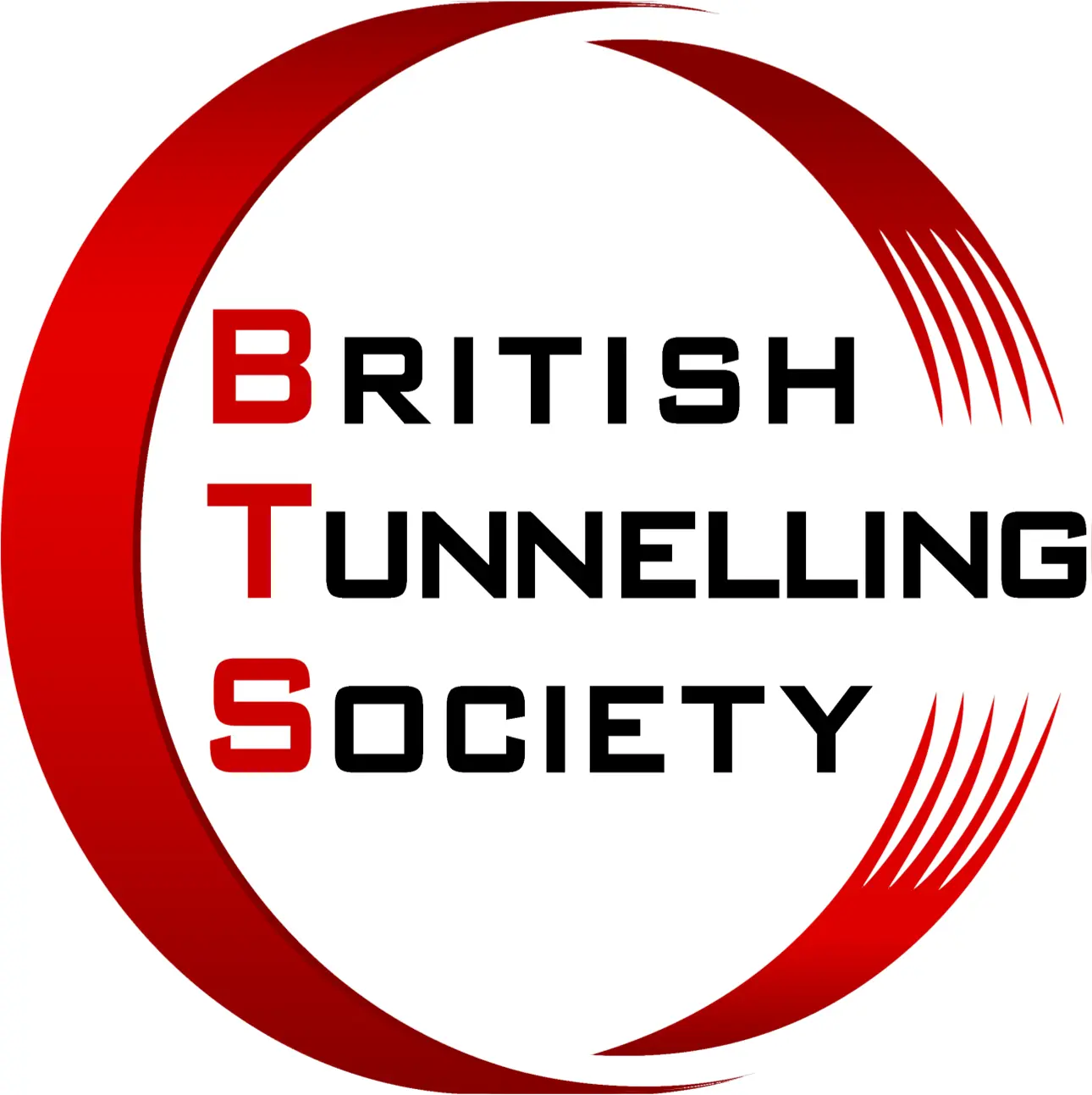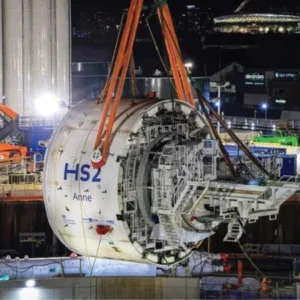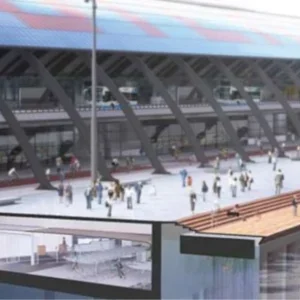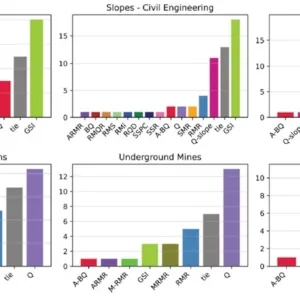When the enormous water pipes were built more than 35 years ago as part of a nuclear power plant, no one could have imagined their current use today as a place for both tunnel rescue training and tunnel construction training just west of Olympia, Washington. From the nearby highway it’s the iconic twin cooling towers, some 500ft (152.5m) tall, that mark the location of a new underground asset. Satsop Business Park – the entity created several years after construction stopped on the Washington Public Power Supply System’s nuclear power plant that was never finished, fueled or fired – has created a place where the tunnel industry can now make use of the massive underground pipes that cost some USD 7M to build in the 1970s. In addition to Satsop Business Park, the interest, commitment and advice from the Seattle Fire Department in helping design the tunnel training center made all the difference in creating a place that attracts tunnel workers and tunnel rescue teams, says Alissa Thurman, manager of business development at Satsop Business Park.
"As tunnel construction continues to be a trend in our nation and around the world, the importance of training to either build a tunnel or respond to an emergency in one will only continue to grow in importance," she says.
"We view our training facility as a tool to facilitate these projects as they move forward."
"There is nowhere in the US that has the potential for tunnel training as this place does with its 12ft [3.7m] tunnels," says Alan Vickery, the assistant chief of the Seattle Fire Department. "These pipes are similar to the real world of tunnelling work that is taking place in the Seattle areas as well as internationally. Nothing that I’m aware of in the U.S. even compares."
The pair of 12ft-diameter water pipes located 27ft (8m) below ground were constructed and installed in the late 1970s. Each is roughly 1,100ft- (335m-) long extending from the cooling tower to underneath the turbine building.
The tunnels are comprised of 9-inch (228.6mm) thick concrete with metal banding throughout and metal mesh wiring, with each segment consisting of a 9ft (2.7m) wide 12ft (3.66m) diameter section, belled together.
They were most likely poured in sections in Tacoma, Washington, according to Nate Hoover, project coordinator at Satsop Business Park.
Placed originally on sandstone with structural backfill at 353ft to 363ft (105.6m to 110.6m) above sea level, in 2012, the pipes took about three months to transform into a training center. The transformation included excavation to uncover their openings, cutting one pipe in half, and pouring concrete pads to allow for easy access and parking of rescue vehicles. In addition, safety and utility systems were installed.
"By using expertise from the Seattle Fire Department and the Northwest Laborers-Employers Training Trust we were able to design and construct a state-of-the-art facility," Thurman says. "The tunnels are equipped with electricity and ventilations systems for the safety of those training as well as for ease in setting up various real-life training scenarios."
In fact, plans call for one of the tunnels to be equipped with rails and small tunnel cars called lokies to be used for training by the Northwest Laborers-Employers Training Trust.
Mike Warren, director of the trust, had already overseen tunnel training just a stone’s throw away underneath the shadow of the other 500ft (152m) tall cooling tower at Satsop Business Park, when the idea of uncovering the tunnels emerged. That facility, complete with the now-retired tunnel boring machine, nicknamed "Helene," was created to teach tunnel workers how to safely operate in tunnels.
"Having this tunnel rescue facility at the Park dovetails nicely with what we’re doing," he says.
Facilities in use
James W. Fowler Co, a heavy civil and tunneling contractor based in Dallas, Oregon, was the first private company to use the center, visiting with 14 employees in November 2012.
"Training like this is required for various projects," says Mike McMillan, project manager for James W. Fowler.
"Virtually every tunnel contractor on an active project is required to train monthly as well as annually train inside a tunnel. This place is perfect; it is convenient, close and ideal for simulating a rescue situation.
"Contractors are typically the first responders to tunnel incidents under construction. We are doing both primary and backup rescue as part of our current contract," McMillan says, adding that his business is fortunate to have in-house qualified tunnel rescue team trainers.
While training at the Satsop Business Park’s tunnel training facility, a smoke-generating machine was used to simulate a fire and make the drill more realistic.
When the six-man rescue team entered the pitch-black tunnel, clues such as a discarded, opened "self rescue" box and changing gas levels were part of the puzzle they had to digest and report to those outside the tunnel.
After a while, the first team came out with new information and a fresh team of five was sent in to take over the operation.
"Practicing in cylindrical shaped confined space environment gives our employees a true sense what it is like in a tunnel rescue, as opposed to training on a flat surface such as an empty parking lot," said Rick Mascarello, the tunnel manager at James W. Fowler.
Inauguration
The Seattle Fire Department inaugurated the training center in October 2012 with dozens of fire fighters undergoing scenarios inside the tunnels. Fire fighters from New York and Ventura, California, were also on hand to observe the training.
While direct fire and smoke over time isn’t good for concrete, Hoover, of Satsop Business Park, says the training facility can allow training customers to use live fire on occasion.
"With the Seattle Fire Department we allowed fires to be used as long as the walls were continually wetted down," Hoover explains.
And as the Seattle fire fighters emerged from the cavernous tunnels under the watchful eyes of their own medics, it was clear the fire fighters had faced real smoke and heat.
Medical personnel studied their faces and their vitals as they dripped sweat and guzzled water. To be able to train in a controlled environment with smoke, fire, pitch dark and the dizzying disorientation that a tunnel can provide, was invaluable, numerous fire fighters commented.
"The Army, which already does lots of training in and around the other structures here, has expressed interest in also training in the tunnels. In addition, we can see easily adding some structures in the future to create scenarios for high-angle rescue training," Hoover says.
According to Thurman, prices vary and the facility can be rented either by the day or the week. For example, it would be about USD 10,000 for a week of training. "The investments made in this new facility are not only beneficial to the Pacific Northwest region, but are also both nationally and internationally significant, Thurman adds.






